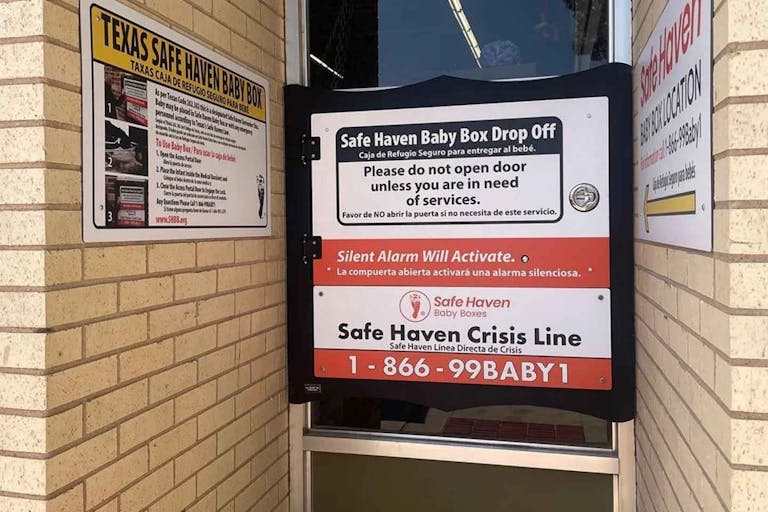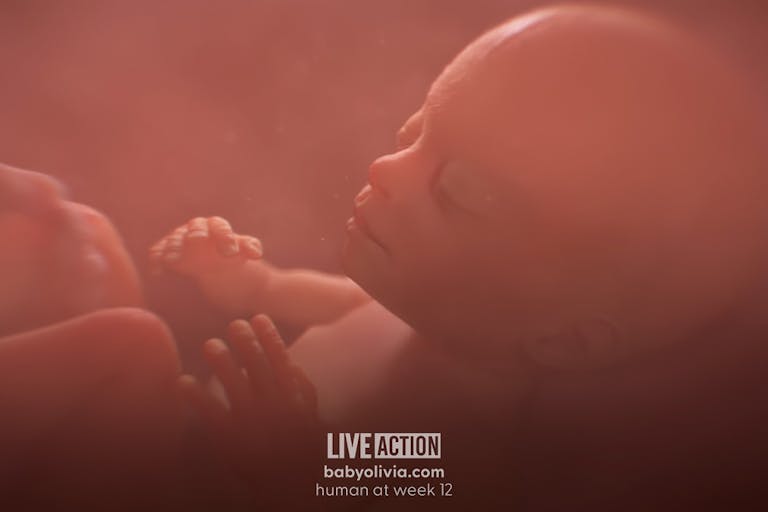
First baby surrendered in Safe Haven Baby Box in Texas
Bridget Sielicki
·
Future of nation’s abortion laws remains murky following Roe’s reversal
More than a year after the fall of Roe v. Wade, the future of abortion laws in America remains murky as several states have passed laws to protect human beings in the womb while others have voted to classify the killing of preborn children as a right in their state constitutions. And in between, there are a variety of ways politicians are seeking to prop themselves up as the most reasonable when it comes to regulating the intentional killing of preborn human beings.
15-week protection
The current political debate over abortion laws seems to center around a federal law that would protect preborn children from abortion beginning at the 15-week mark. A 2022 poll from the Center for American Political Studies at Harvard University and The Harris Poll found that a majority of voters of every political persuasion would support their state restricting abortion after 15 weeks (60% Dem, 84% GOP, 70% Ind). In that same poll, a higher percentage of women (75%) said they would support a 15-week restriction, compared to 69% of men.
A June poll sponsored by the pro-life Susan B. Anthony Pro-Life America revealed that 77% of respondents said preborn children should be protected from abortion beginning at conception (fertilization), after six weeks, or after 15 weeks.
On a federal level, enacting a law protecting preborn children from abortion at 15 weeks would save about four percent (4%) of children at risk of being aborted. According to the CDC, in 2020, 447,734 of the nation’s 466,726 abortions were committed in the first 15 weeks of pregnancy. None of those 447,734 babies would be protected by a 15-week law.
By 15 weeks, preborn children have been actively moving for weeks, their tiny lips and noses are formed, they can touch their hands to their faces, and they react to stimuli. Their teeth have even begun to grow.

Six-week protection
Since Roe was overturned, multiple states have enacted laws protecting preborn children from abortion beginning when their heartbeats are detectable — typically at about six weeks, though a person’s heart first begins to beat by about 21 days post-fertilization. Such laws are often called “fetal” heartbeat bills — though technically, a child is in the embryonic stage when their heartbeat becomes detectable by ultrasound.
The abortion industry attempts to dehumanize the preborn child by referring to this heartbeat instead as “cardiac activity,” but in reality, “cardiac” as a term relates to the heart. According to Johns Hopkins Medicine, by the end of four weeks gestation, “the heart is beating,” and by the end of eight weeks gestation (six weeks post-fertilization), “you can hear the baby’s heartbeat using an instrument called a Doppler.” And in 2008, the American Society for Reproductive Medicine published a study analyzing IVF pregnancies, and concluded that “positive FCA [fetal cardiac activity, also noted in the study as a “heartbeat”] at 6 weeks’ gestation [4 weeks post-fertilization] is an excellent predictor of first-trimester pregnancy outcome.” In other words, for years — until the term “heartbeat” became controversial in the eyes of the abortion industry — it has been used as an accepted medical term.

As reported by Secular Pro-Life, The Developing Human by Moore et al (10th Edition, 2013) explains in “Chapter 13: Cardiovascular System”:
The cardiovascular system is the first major system to function in the embryo. The primordial heart and vascular system appear in the middle of the third week (Fig. 13-1). This precocious cardiac development occurs because the rapidly growing embryo can no longer satisfy its nutritional and oxygen requirements by diffusion alone. Consequently, there is a need for an efficient method of acquiring oxygen and nutrients from the maternal blood and disposing of carbon dioxide and waste products.
According to incomplete data from the CDC, in 2020, 255,132 of the nation’s (excluding 11 reporting areas) 466,726 abortions were committed after six weeks. About 45% (211,594) of abortions occurred prior to six weeks. A six-week protection could in theory cut the number of abortions by more than half.
A 2023 NPR/PBS NewsHour/Marist National Poll found that the proportion of Americans who support pro-life laws “up to the time of cardiac activity at about 6 weeks” has increased from 27% to 40%.
Full federal protection
Some pro-lifers are now calling for full federal protections for preborn children, effectively ensuring no child dies by abortion. The New North Star Coalition Letter explained that the 14th Amendment already includes such protections.
The letter expressly states that “to be pro-life is to affirm that the lives of innocent human beings deserve legal protection from violence, both before and after birth.”
It continues, “The Fourteenth Amendment expressly forbids the states from denying ‘to any person within [their] jurisdiction the equal protection of the laws’… Crucially, the Amendment then goes on to provide that ‘no state shall deprive any person of life, liberty, or property, without due process of law; nor deny to any person within its jurisdiction the equal protection of the laws.’”
State-level protection
Other pro-lifers argue that in Dobbs v. Jackson Women’s Health Organization, the case that led to the overturning of Roe in June 2022, the Supreme Court put the decision of the legality of abortion into the hands of state governments and that this is how it should be.
In allowing abortion as a decision left to the states, each state has created its own determinations of when an entire class of human beings is worthy of protection.
While this is in some respects an improvement over Roe v. Wade and its command that all states allow abortion-until-viability, the Dobbs ruling could have gone a step further and validated the science that life begins at fertilization and that all human lives — regardless of age, location, race, gender, etc — are worthy of protection.

No protection
On the flip side, some politicians are calling for abortion on demand throughout pregnancy… while simultaneously claiming that abortion doesn’t typically occur in the third trimester of pregnancy unless there is a dire medical situation.
However, children born as young as 21 weeks have survived, exposing the truth that intentionally killing a preborn child (especially later in pregnancy) is not medically necessary. Even if a pregnancy must end in order to save a woman’s life, her child does not have to be intentionally and directly killed prior to delivery (induced abortion). Doctors can safely deliver the child and then attempt to save that child’s life. If that child is too young to survive, his death would be the tragic result of an induced life-saving delivery, not the direct and intentional killing of an induced abortion.
One study from the pro-abortion group ANSIRH didn’t offer a detailed breakdown of women’s reasons or any statistics as to why women have abortions late in pregnancy. Instead, it claimed that women have abortions in the third trimester for one or more of the following reasons (which it divides into two categories):
She didn’t know she was pregnant earlier.
She had difficulty arranging an abortion.
The baby had a health problem or disability.
The 2023 NPR/PBS NewsHour/Marist National Poll found that only “22% of Americans believe abortion should be available at any time during pregnancy” as abortion-on-demand supporters want.
In addition, the poll revealed, “Most Republicans (86%) and independents (73%) favor restricting abortion to, at most, the first trimester of pregnancy. While a majority of Democrats (58%) favor a longer window for abortions to be performed, even 42% of Democrats want limitations.”
Incomplete data from the CDC shows that a minimum of 4,382 babies were killed by abortion after 21 weeks in 2020 across 39 reporting areas, excluding data from heavily pro-abortion areas such as California, Connecticut, the District of Columbia, Illinois, and New York State, as well as six other states. Abortion-on-demand allows any child to be targeted for abortion for any reason through all nine months of pregnancy.
Live Action News is pro-life news and commentary from a pro-life perspective.
Contact editor@liveaction.org for questions, corrections, or if you are seeking permission to reprint any Live Action News content.
Guest Articles: To submit a guest article to Live Action News, email editor@liveaction.org with an attached Word document of 800-1000 words. Please also attach any photos relevant to your submission if applicable. If your submission is accepted for publication, you will be notified within three weeks. Guest articles are not compensated (see our Open License Agreement). Thank you for your interest in Live Action News!

Bridget Sielicki
·
Analysis
Cassy Cooke
·
Politics
Cassy Cooke
·
Analysis
Cassy Cooke
·
Analysis
Nancy Flanders
·
Newsbreak
Angeline Tan
·
Politics
Nancy Flanders
·
Pop Culture
Nancy Flanders
·
Politics
Nancy Flanders
·
Politics
Nancy Flanders
·
Abortion Pill
Nancy Flanders
·